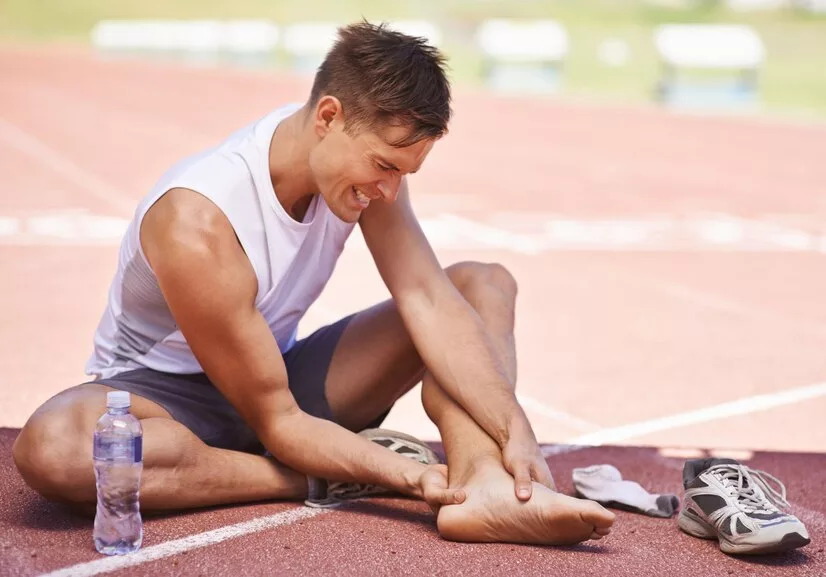Whether you’re pounding the pavement at dawn, racing on a track, or jogging through your neighborhood, running is an elemental exercise that speaks to our primal roots. The simple act of propelling oneself forward, one foot in front of the other, has endured as a staple of athletic competition and personal fitness. However, this seemingly natural activity is not without its pitfalls, especially when it comes to the health of your feet and ankles.
Hitting Your Stride: Understanding Track Injuries
For runners at all levels, from recreational joggers to elite speeds, the importance of foot and ankle health cannot be overstated. These intricate structures bear the weight of our ambitions and carry us through our chosen paths, trails, and tracks. Yet, they are also the areas most susceptible to injury in a runner’s anatomy. Overuse injuries, such as heel pain (plantar fasciitis), Achilles tendonitis, sesamoiditis, stress fractures, and posterior tibial tendonitis (or PTTD), can plague athletes and hinder their performance. Even children and adolescents are not immune, commonly facing conditions like calcaneal apophysitis.
What Ails You? Identifying Prevalent Track Injuries
According to arizonafoot.com, the patient education website of the American College of Foot and Ankle Surgeons, evaluating the myriad of potential injuries is the first step toward healing. Let’s explore some of the most common afflictions that can hurt a runner’s progress.
Heel Pain and Plantar Fasciitis
The relentless ache in the heel experienced by many runners can often be attributed to plantar fasciitis. This condition involves the inflammation of the plantar fascia – a thick band of tissue connecting your heel bone to your toes. It’s a classic runner’s complaint resulting from excessive stress on the heel.
Achilles Tendonitis
Named after the famous hero of Greek mythology, Achilles tendonitis is as much a bane for runners today as that fabled arrow was for the warrior of yore. This injury involves inflammation of the tendon that runs down the back of your leg to your heel. It’s often a result of overuse or increased intensity in a running regimen.
Sesamoiditis
Sesamoid bones are tiny, pea-sized bones embedded within tendons. In the foot, they are found beneath the big toe. Sesamoiditis refers to the irritation or inflammation of these bones and is quite common amongst runners who push off their big toes frequently.
Stress Fractures
Repetitive force, heavy training sessions, and increased mileage can lead to stress fractures—tiny cracks in a bone. These are particularly insidious injuries that can be difficult to diagnose without proper medical imaging.
Posterior Tibial Tendonitis (PTTD)
As a key stabilizing tendon in the foot, the posterior tibial tendon can become inflamed, leading to PTTD. This condition causes pain on the inside of the foot and ankle, and in severe cases, can lead to flatfoot.
Calcaneal Apophysitis
Young athletes, often those in their growth spurts, can experience inflammation at the growth plate in the heel bone – a condition known as calcaneal apophysitis.
The Professional Triage: Evaluation by a Foot and Ankle Surgeon
The initial response to any persistent foot or ankle pain as a runner should be to consult with a foot and ankle surgeon. These specialists can pinpoint the true culprit of discomfort and tailor a treatment plan to the individual’s needs. Recommendations often suggest using a combination of rest, ice, compression, and elevation (RICE) to alleviate symptoms.
Custom Orthotic Devices: A Giant Leap in Treatment
For many of these conditions, one effective treatment approach is the use of custom orthotic devices. These tailor-made inserts align and support the foot and ankle, redistributing pressure and correcting your gait. They are particularly beneficial in addressing biomechanical issues that contribute to overuse injuries.
Pacing Yourself: Prevention and Care
Incredibly, often the most sophisticated solutions in running-related injury prevention and care boil down to simple principles. Gradual increases in distance and intensity, proper footwear, attentive warm-up and cool-down routines, and listening to one’s body are essential measures.
Beyond the Track: The 12 Common Sports Injuries and Understanding Overuse
Runners are athletes, and as such, they share common ground with their sporting peers: risks of sprains, strains, knee injuries, shin splints, and many others extend beyond the track. Understanding that overuse injuries—those caused by repetitive trauma—rank as the most common issue for runners is pivotal in their approach to training.
Key Takeaways: Your Running Health Checklist
By being informed and vigilant, you can take substantial steps toward mitigating the risk of foot and ankle injuries:
- Regularly evaluate your training regimen for potential overloads.
- Invest in high-quality, supportive running shoes that suit your running style and replace them frequently.
- Incorporate strength training and flexibility exercises into your routine to build resilience.
- Always pay attention to pain and discomfort and address it immediately with professional help.
Calling All Runners: The Road Ahead
Now, armed with the knowledge of common track injuries. With their symptoms, treatments, and preventive strategies, the road ahead for runners looks optimistic. Remember to tailor your approach, listen to your body, and never underestimate the value of professional input.
The quest for peak performance is a journey marked with hurdles. But with a proactive stance on health. Runners at all levels can enjoy the freedom of their sport while safeguarding against the risks that threaten their stride.




